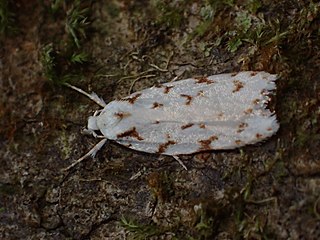
Izatha hudsoni is a species of moth in the family Oecophoridae. It is endemic to New Zealand. It is widespread throughout the North Island.

Erechthias chionodira is a species of moth in the family Tineidae. It was described by Edward Meyrick in 1880 using two specimens obtained in Auckland on a shady bank amongst forest in January. This species is endemic to New Zealand.

Circoxena ditrocha is a species of moth in the family Blastodacnidae. This species is endemic to New Zealand and has been collected on both the North and South Islands. The habitat of this species is on the edges of native forest or scrub and it may be associated withPseudopanax arboreus. As at 2000 the host species of this moth is unknown but it has been hypothesised that the larvae are seed borers. Adults are on the wing in December to March. It is classified as "At Risk, Naturally Uncommon" by the Department of Conservation.
Petasactis is a genus of moths belonging to the family Tineidae. It contains only one species, Petasactis technica, which is endemic to New Zealand. This species has not been collected since prior to 1888. It is classified as "Data Deficient" by the Department of Conservation.

Erechthias lychnopa is a species of moth in the family Tineidae. This species is endemic to New Zealand and has only been collected in a karaka grove at Sinclair Head in Wellington in November. It has yet to be collected again. It has been hypothesised that the larvae inhabit dead wood. It is classified as "Data Deficient" by the Department of Conservation.

Erechthias acrodina is a species of moth in the family Tineidae. It was described by Edward Meyrick in 1912 using a specimen collected by George Vernon Hudson in Wellington. This species is endemic to New Zealand.

Erechthias charadrota is a species of moth in the family Tineidae. It was described by Edward Meyrick in 1880 using three specimens caught in dry forest-scrub near Wellington and Port Lyttelton during the month of January. This species is endemic to New Zealand.

Erechthias chasmatias is a species of moth in the family Tineidae. It was described by Edward Meyrick in 1880 using two male specimens taken in forest in Wellington in January. This species is endemic to New Zealand. It has been found in the Wellington Botanic Garden.

Erechthias crypsimima is a species of moth in the family Tineidae. It was described by Edward Meyrick in 1920 using a specimen collected by George Vernon Hudson in Wellington in February. This species is endemic to New Zealand. Hudson noted that he collected the type specimen of this species from the black trunk of a beech tree.

Erechthias decoranda is a species of moth in the family Tineidae. It was described by Edward Meyrick in 1925. This species is endemic to New Zealand.
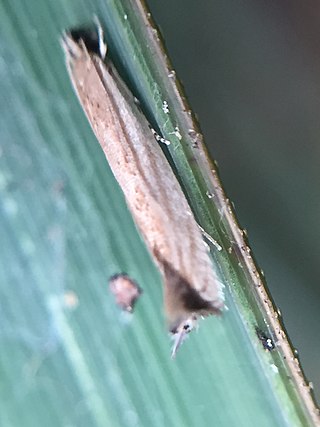
Erechthias exospila is a species of moth in the family Tineidae. It was described by Edward Meyrick in 1901 using a specimen he collected in Whangārei in December. This species is endemic to New Zealand.
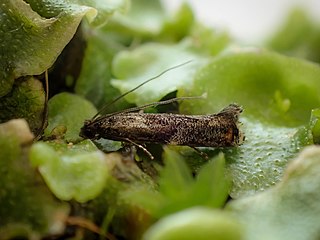
Erechthias externella is a species of moth in the family Tineidae. It was described by Francis Walker in 1864. This species is endemic to New Zealand.
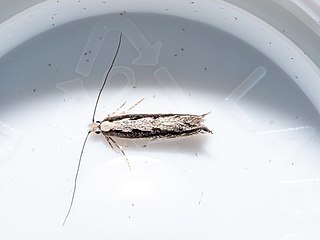
Erechthias fulguritella is a species of moth in the family Tineidae. It was described by Francis Walker in 1863. This species is endemic to New Zealand.
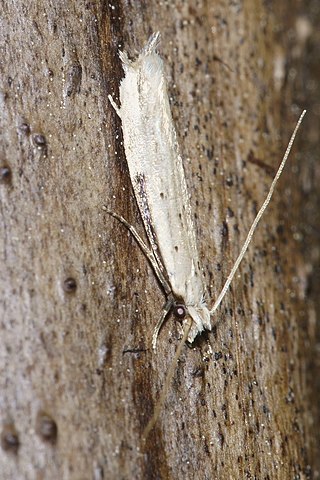
Erechthias hemiclistra is a species of moth in the family Tineidae. It was described by Edward Meyrick in 1911. This species is endemic to New Zealand. Entomologist George Hudson reared this moth from caterpillars and cocoons in the flower stems of Chionochloa conspicua at Makara. The adults emerged in November and February. The food of the larvae of this species is apparently dead woody fibre.

Erechthias indicans is a species of moth in the family Tineidae. It was first described by Edward Meyrick in 1923. This species is endemic to New Zealand and has been observed in Wellington in January.

Erechthias stilbella is a species of moth in the family Tineidae. It was described by Edward Doubleday in 1843. This species is endemic to New Zealand.

Erechthias terminella is a species of moth in the family Tineidae. It was described by Francis Walker in 1863. This species is endemic to New Zealand.

Eschatotypa halosparta, also known as the salt and pepper fungus moth, is a species of moth in the family Tineidae. It was described by Edward Meyrick in 1919 from a specimen collected by George Vernon Hudson at Wainuiomata in December. This species is endemic to New Zealand. This species has also been collected near the Tui Mine in Te Aroha.
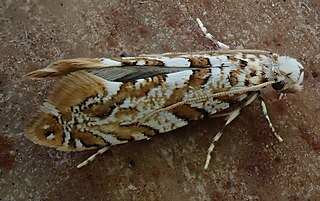
Eschatotypa melichrysa is a species of moth in the family Tineidae. It was described by Edward Meyrick in 1880. This species is endemic to New Zealand. Meyrick regarded them as common in Wellington and Dunedin, in December and January. He obtained specimens from beating forest growth.

Tinea accusatrix is a species of moth in the family Tineidae. It was described by Edward Meyrick in 1916. However the placement of this species within the genus Tinea is in doubt. As a result, this species has been referred to as Tinea (s.l.) accusatrix. This species is endemic to New Zealand.




















